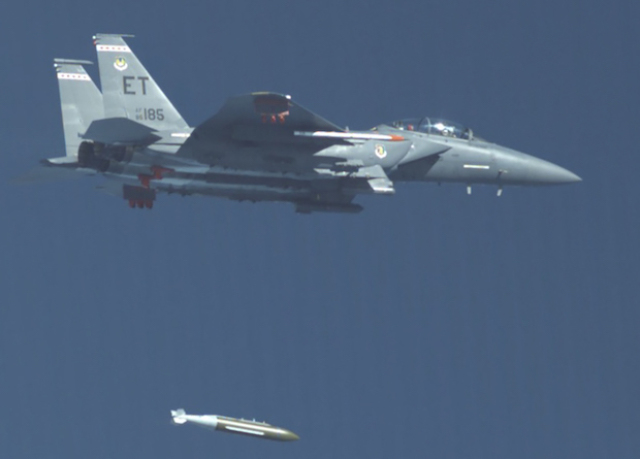The US Air Force has completed a series of tests of the new GBU-72 concrete-piercing bomb weighing 2.3 tons, during which it was dropped from the F-15 Strike Eagle heavy fighter-bomber. The striking capability of the GBU-72 will be significantly higher than that of the comparable GBU-28, which the US military has been using for three decades.
The GBU-72 concrete-piercing bomb has been developed since at least 2017 to replace the GBU-28, which have been in service since 1991. The US Air Force plans to start purchasing GBU-72 next year and purchase 125 units. The carriers of these munitions should be fighters and bombers, although the military did not specify which aircraft they would be except for the F-15E.
GBU-72 is equipped with a modified kit for converting free-falling JDAM bombs, which allows you to direct them to certain coordinates. The JDAM includes wings and a tail unit with a controlled tail. It is usually used on lighter ammunition, such as the 907-kilogram GBU-31 .
On October 12, the US Air Force announced the completion of a series of GBU-72 tests. Their goal was to demonstrate that a bomb can be safely dropped from an airplane and to confirm that a modified JDAM kit is capable of controlling a 2.3 thousand kilogram bomb.
The test series consisted of three flights, during which, among other things, the GBU-72 was dropped from an F-15 Strike Eagle fighter-bomber from an altitude of more than 10 thousand meters. It happened on October 7.
In addition to flight tests, the military conducted a series of ground tests at the Eglin base, during which the warhead of the bomb was detonated to obtain data on its damaging effect. Although details about its capabilities are not disclosed, the head of the GBU-72 program, James Culliton, says that its striking ability will significantly exceed the GBU-28. The latter is capable of penetrating more than six meters of reinforced concrete.
The US military is armed with bombs larger than the GBU-72. This is a GBU-57 MOP weighing 13.6 tons. Their first version could sink almost 61 meters after the fall. Earlier we wrote that the GBU-57 is being integrated into the range of weapons of B-2 Spirit bombers.
Vasilisa Chernyavtseva
Editor's note: After the news was published, the GBU-57 bomb data was corrected in the last paragraph. According to the US Air Force, its first version was designed in such a way that after the fall it would sink almost 61 meters, and not break through 60 meters of reinforced concrete.

